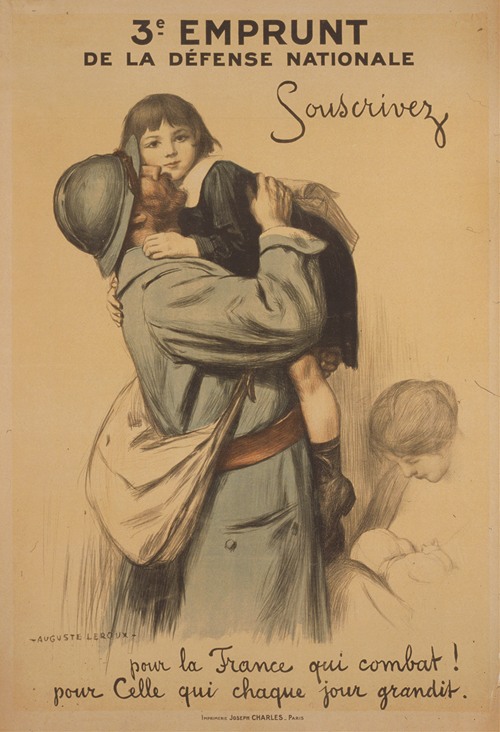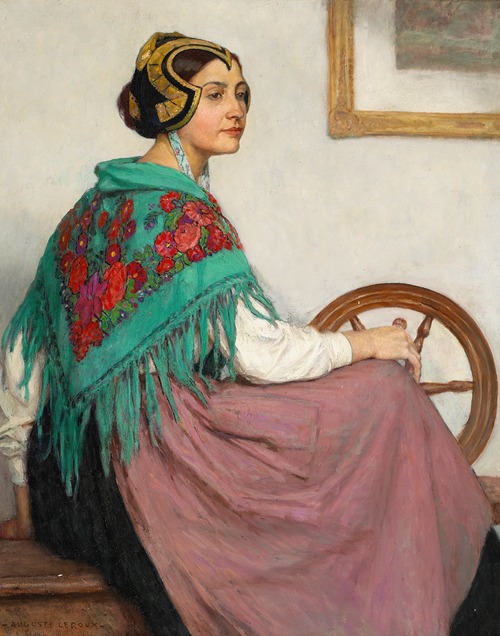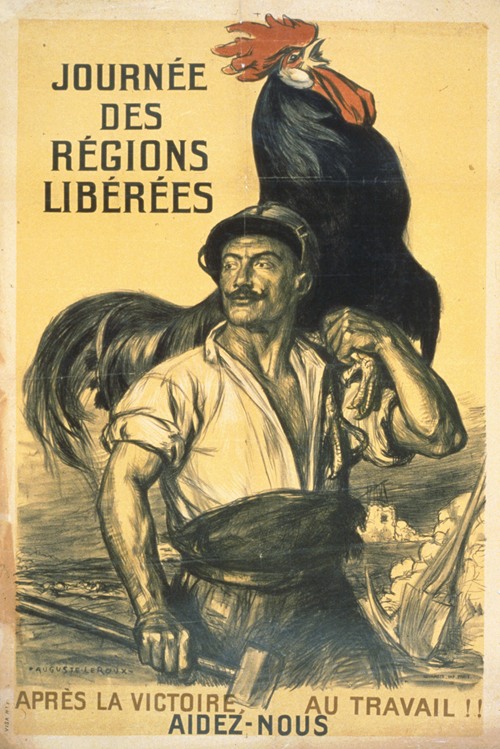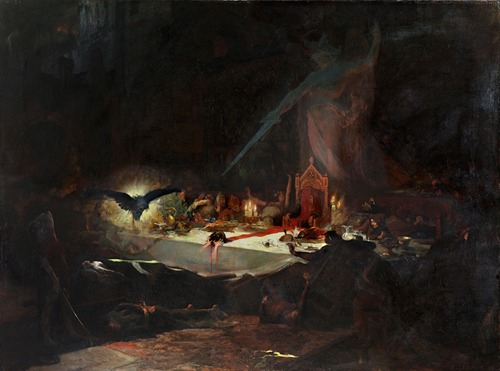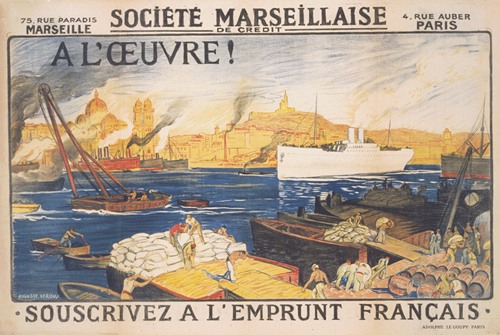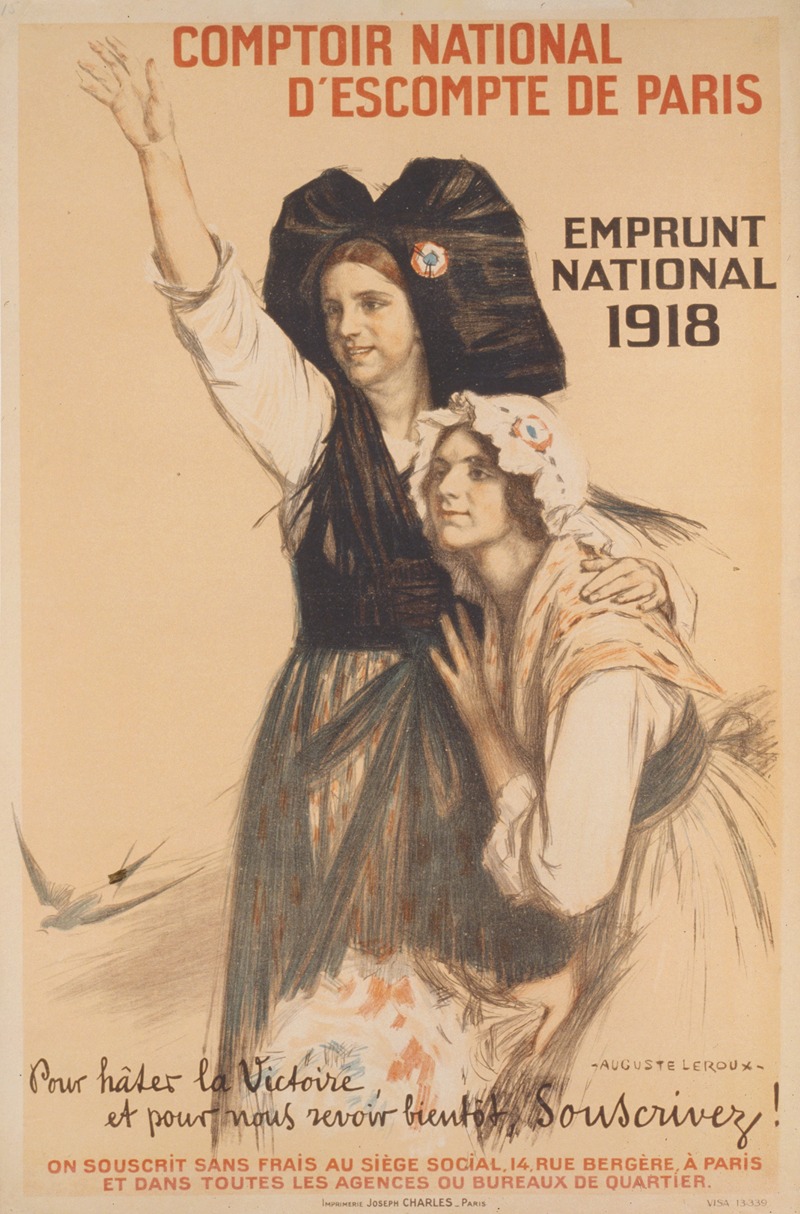

Jules Marie Auguste Leroux was a French painter and illustrator. His younger brother Georges Paul Leroux (3 August 1877 - 16 February 1957) was also a brilliant artist who won the Prix de Rome in painting in 1906 and was a member of the Académie des beaux-arts.
Jules Marie Auguste Leroux was born in the 3rd arrondissement of Paris on 14 April 1871, during the Commune. His father, Gustav Ferdinand Leroux, was a publisher of prints established at 43 rue Saint-André-des-Arts. The family had its roots in the neighborhood of Coutances (Manche), in the village of Trelly.
As a young man he entered the École nationale supérieure des arts décoratifs where he studied drawing of nudes from models and after academics. He was forced work on fashion drawings and illustrations for children. In 1892 he was then admitted to the École nationale supérieure des Beaux-Arts on the Rue Bonaparte, where he studied in the studio of Léon Bonnat (1833-1922).
He won many successes including the 3rd drawing Medal in January 1892, the 2nd Medal in July and the 2nd Medal in November of that year. He did his military service with the 46th Infantry at Fontainebleau. Back in Paris in September 1893, he won the prize for figure drawing in November 1893 and the prize for torso in March 1894. He remained with the school until he was aged 23. He won the first Grand Prix de Rome in June 1894 with Judith presenting the Head of Holofernes to the people of Bethulia. (Painting preserved at the National School of Fine Arts of Paris).
He left for Italy for three years of study at the Villa Medici in Rome from 1895 to 1898, accompanied by the painter Adolphe Déchenaud and musician Henri Rabaud. At the villa, he met the musician Henri Busser, with whom he befriended and whose portrait he painted. He exhibited at the Salon of French artists from the beginning of the year 1898. He earned a bronze medal at the Universal Exhibition in Paris in 1900.
In 1906, he married Clotilde Morel. In 1908 he moved with his wife to a large house in the Quartier du Petit-Montrouge, in the ( 14th arrondissement ) of Paris, Villa d'Alesia. The top floor of the house, covered with a large glass roof, naturally became his workshop. He would live there until the end of his life surrounded by his wife and three children. He was a Professor at the École nationale supérieure des Beaux-Arts in Paris for 30 years, a jury member of the committee of French Artists Society in 1904, an art teacher at the Academy de la Grande Chaumiere, and was made a knight of the Legion of Honor.
Auguste Leroux died in Paris on 26 March 1954. The sculptor Claude Grange, President of the Institute of France, pronounced his eulogy on 31 March 1954. A plate decorated with a medallion portrait by Spanish sculptor Enrique Pérez Comendador is affixed to his house at 11 Villa d'Alesia. A major retrospective exhibition of his works was held at the Grand Palais from 21 May to 12 June 1955.

